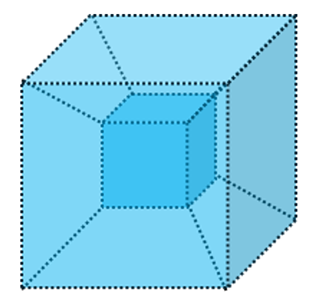Reviewed by Danielle Ellis, B.Sc.Sep 30 2024
Hayato Goto of the RIKEN Center for Quantum Computing in Japan has presented a novel quantum error correction method utilizing "many-hypercube codes" in a study that was published in Science Advances.
 A tesseract is a four-dimensional hypercube. Image Credit: RIKEN
A tesseract is a four-dimensional hypercube. Image Credit: RIKEN
This method’s elegant geometry could facilitate incredibly effective error corrections and pave the way for highly parallel techniques that will enable fault-tolerant quantum computing—the next phase of quantum computing evolution.
Thanks to recent experimental progress, there is now great hope that we will be able to build fault-tolerant quantum computers, meaning quantum computers that can correct errors and surpass the power of conventional computers on certain tasks. To achieve this, however, it is important to develop efficient quantum error correction.
Hayato Goto, RIKEN Center for Quantum Computing
Over the past few decades, scientists have proposed a wide range of error correction techniques. The standard method for quantum error correction involves encoding a single logical qubit, which is similar to a bit in a classical computer, onto numerous entangled physical qubits.
A decoder is then used to extract the logical qubits from the physical ones. This method's scalability is hampered by the enormous increase in the number of physical qubits needed, which results in significant resource overheads.
High-rate quantum codes, like quantum low-density parity-check codes, have been explored as a solution to this issue. However, this method is less efficient in terms of time because it requires the logical gates—which enable calculations—to be set up quite sequentially rather than fully parallel.
To address this, Goto suggested employing a method he refers to as "many-hypercube codes." This method is specifically known by the complicated term "high-rate concatenated quantum codes." What makes it novel is that the logical qubits can be mathematically visualized as forming a "hypercube," a type of shape that includes squares, cubes, and higher-order shapes like tesseracts. Given that most high-rate quantum codes have complex structures, the code's exquisite mathematical and geometric structure is astounding.
Goto highlights that for the new codes to produce better performance, he had to create a brand-new, specialized decoder that could comprehend the output from the actual qubits. High performance is possible with this novel method because it is based on level-by-level minimum distance decoding.
Goto named the system “high-performance fault tolerant computing” about "high-performance computing,” which is used for massively parallel computing. This is because, in contrast to other similar methods, it also permits the placement of logical gates in parallel rather than in series, making the system analogous to parallel processing in classical computers.
The labor was fruitful. Goto states that the codes appear to be the highest in the world when it comes to fault-tolerant quantum computing, as they achieve an encoding rate of up to 30%, which is a measure of the ratio between logical and physical qubits. Furthermore, despite the high rate, the performance is on par with traditional low-rate codes.
Goto concluded, “In practice, this code could be implementing with physical qubit systems such as laser-trapped neutral-atom qubits.”
Journal Reference:
Goto, H.(2024) High-performance fault-tolerant quantum computing with many-hypercube codes. Science Advances. doi.org/10.1126/sciadv.adp6388